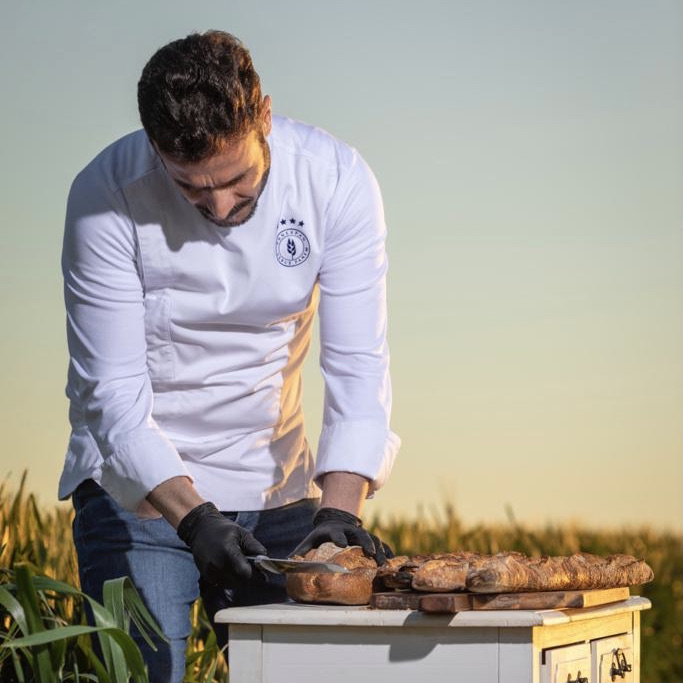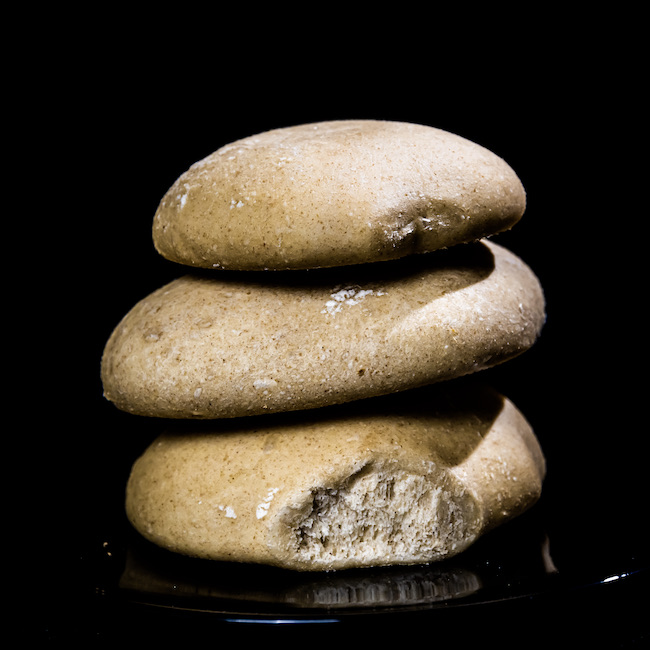.png.transform/rendition-xs/image_image%20(1).png)
Domi Vélez, World's Best Baker in 2021, Shares in a Book the Secrets of Spanish Breads
In The Best Bread in the World, this Seville native highlights some of Spain's most traditional breads as mollete and includes also some sweet recipes like Tarta de Santiago
In 2021, Domi Vélez won the World's Best Baker award, organized by the International Union of Bakers and Confectioners (UIB). This artisan, born in Lebrija (Seville province), has published his book, The Best Bread in the World (Planeta Gastro), in which he reviews breadmaking basics, from sourdough starter to flours. It includes a chapter written by Manuel León Béjar, Scientific Director of Archeogastronomy at the University of Cádiz, which summarizes the principles of breadmaking and includes a look at the history of mankind.
Vélez, who's the fifth generation in a family of bakers, features a wide range of recipes over more than a hundred pages. That includes the mollete from Málaga, which is protected under the PGI Mollete de Antequera. He explains how to make this type of soft-crumb bread with a high level of moisture and a peculiar shape: a flattened, irregular ellipse with a bit of flour from the breadmaking process still on it. He also explains how to make telera (a typical bread from Lebrija), a flat, closed loaf weighing one kilo that retains moisture and which has begun the process of obtaining PGI status.

The book also includes recipes for stuffed breads, in many cases with Spanish products. This is the case of Payoya goat cheese bread with mulsum wine, honey, and pistachios; Bluefin tuna and garum bread; and chorizo bread. The book also includes Domi Vélez's interpretation of sweet recipes such as Tarta de Santiago (Spanish almond cake), dust cakes, and puff pastry triangles.

A Land of breads
Spain is one of the countries with the greatest diversity of breads in the world, some of which have quality seals. The fact that they're consumed daily, together with the continued use of artisanal processes, has resulted in six breads with PGI status. One is the already mentioned Mollete de Antequera. In Catalonia, there's Pa de pagès, a round loaf without cracks in the upper crust. Galicia has Pan de Cea, named after the town where it's made and which establishes that 50% of the flour used must be from the region. The province of Granada, in Andalusia, has Pan de Alfacar, which is dense and white and must be made with local water. Lastly, there's Pan de Cruz from the region of Calatrava, in Ciudad Real (Castile-La Mancha), which has a cross on top that’s made in the dough before baking and which appears in the pages of Don Quixote. The most recent is Pan Galego, made with sourdough and a high content of water, which results in breads with a crispy crust and a spongy crumb.
